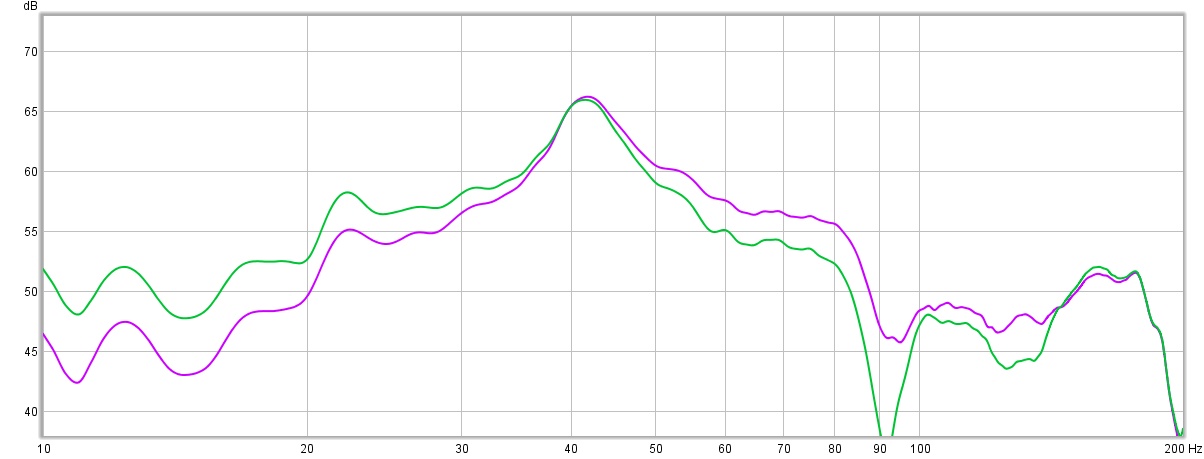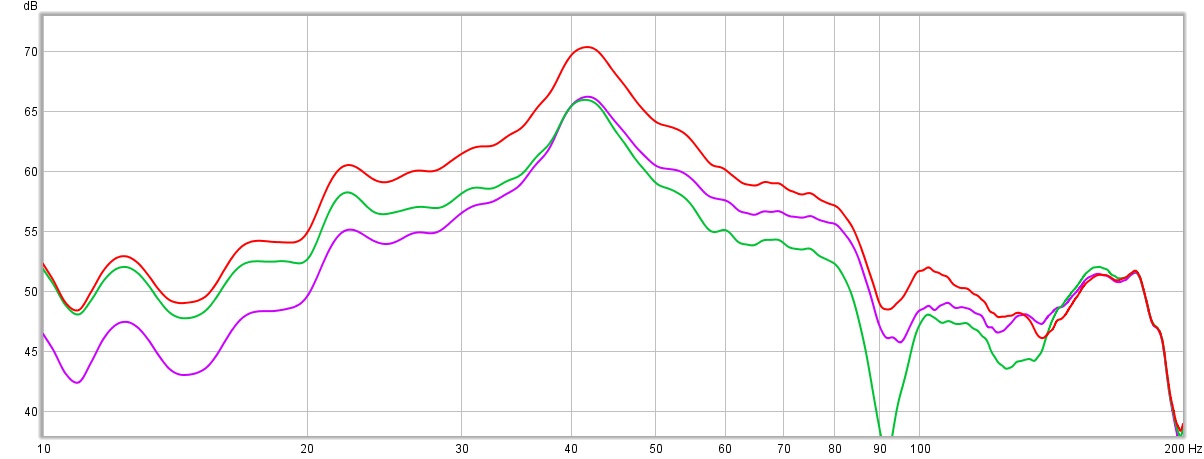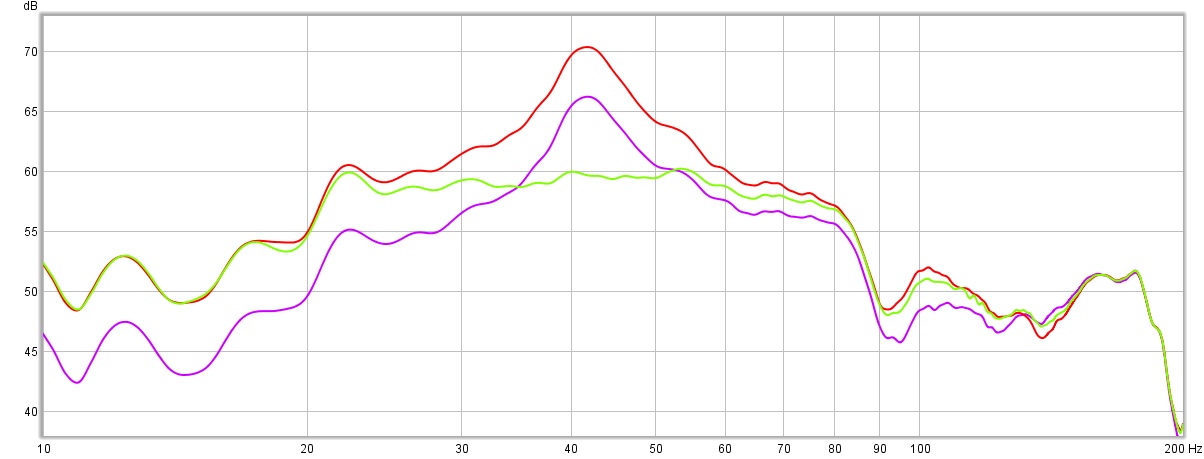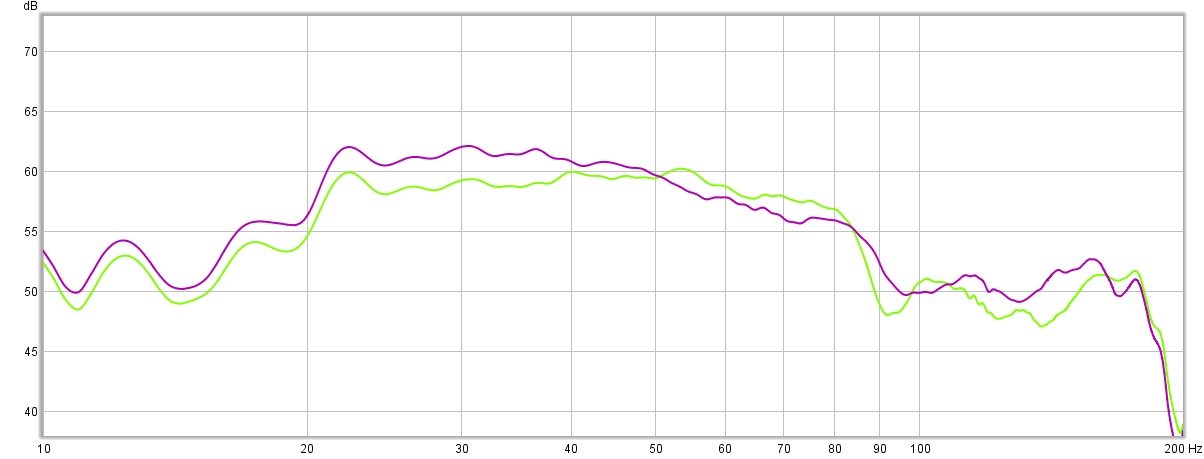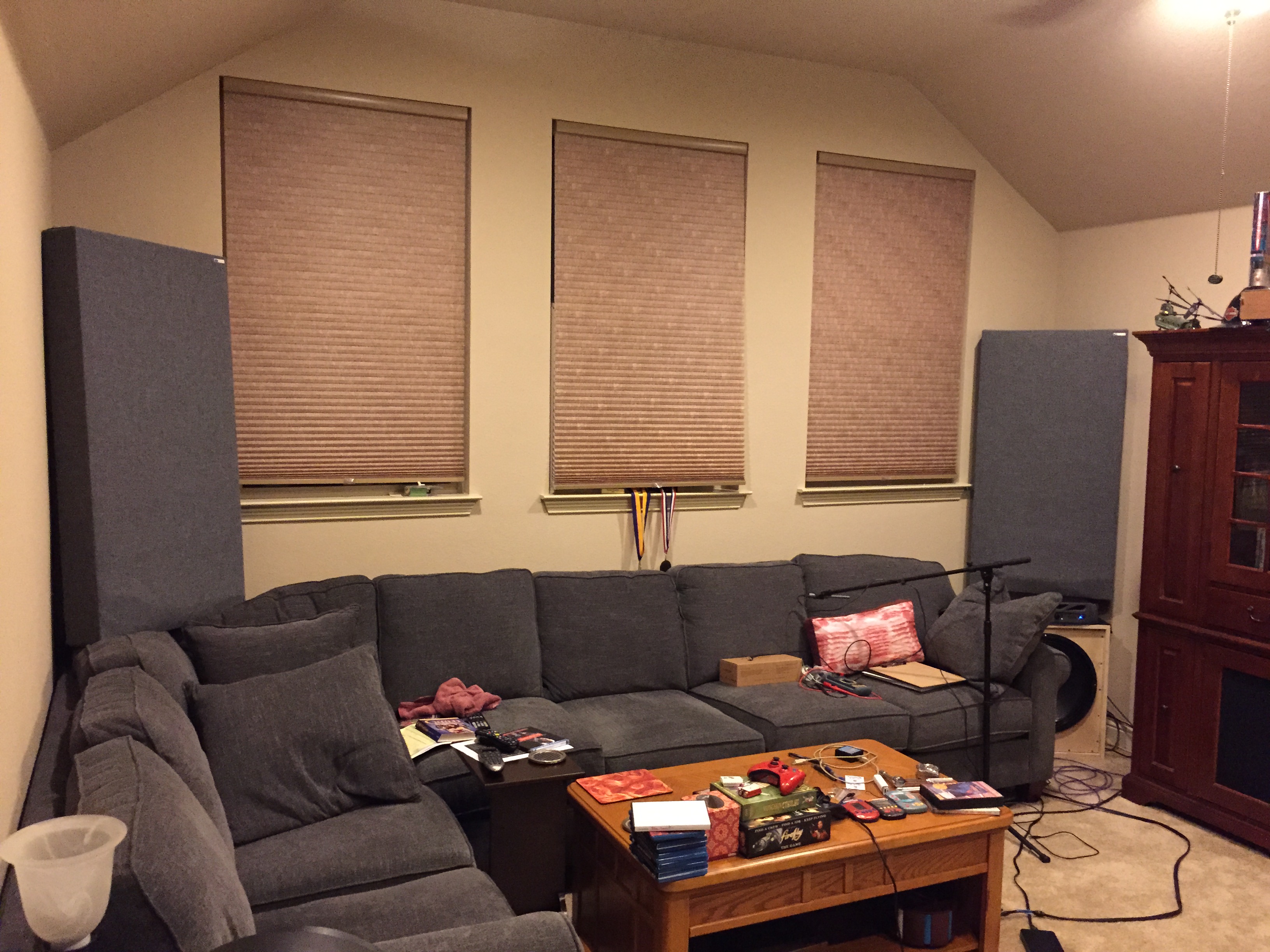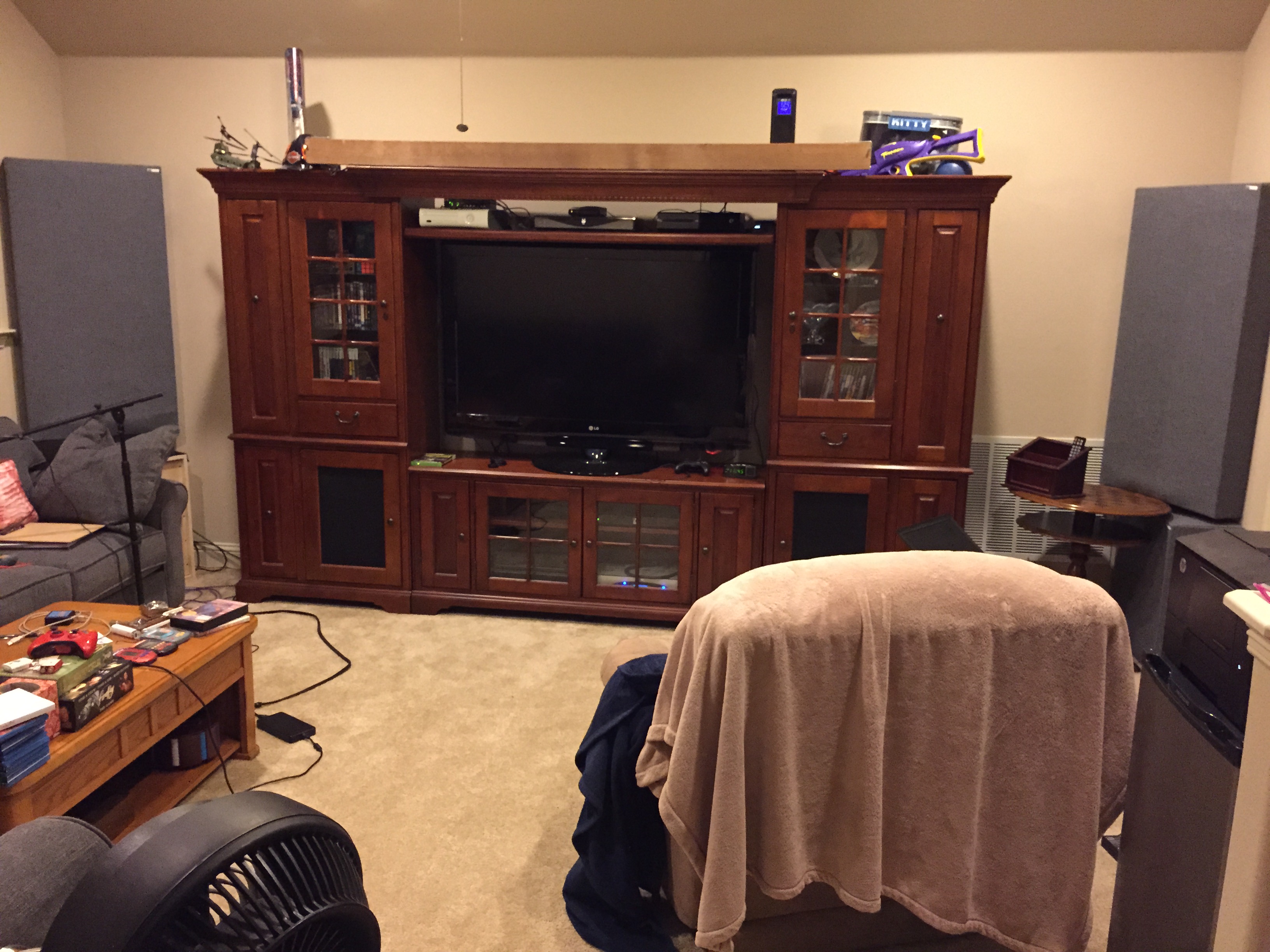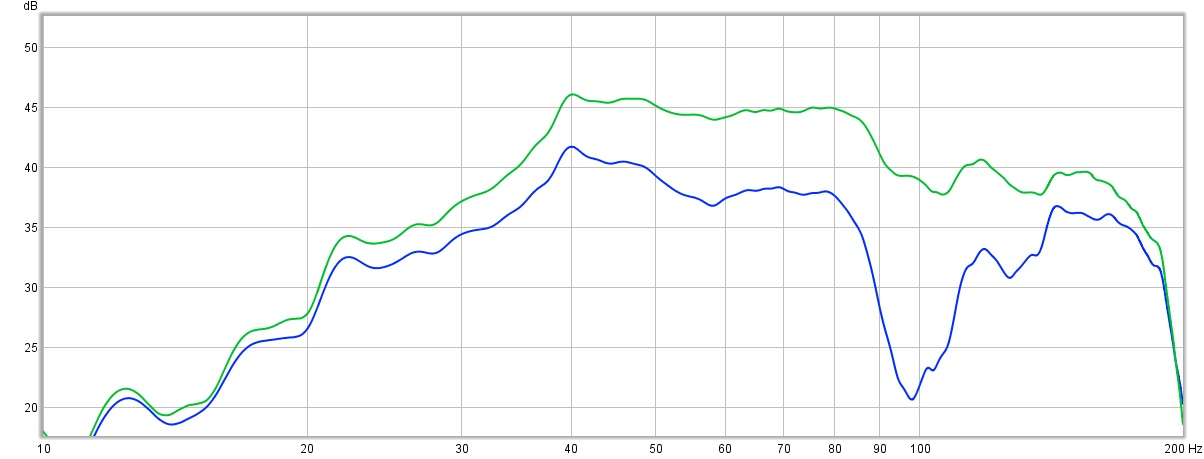In my previous installment I compared the results of equalization with the SVS AS-EQ1 vs. my Onkyo TX-NR545 receiver. The SVS AS-EQ1 notched the resonance peak at 40 Hz. However, it did not do anything to extend the response below 40 Hz. Bass equalization algorithms like Audessey have to work with a lot of different subwoofers with varying capabilities. So it isn’t a surprise to me that the algorithm does not attempt to extend the bass – it would be easy to damage lesser subwoofers.
How to fix that? I know that the 18″ driver can handle a lot more – equalization is part of my design approach. The Crown XTi-1002 showed up today – back from repair. One of the nice features of this Crown is it includes a built-in digital processor complete with parametric equalization, crossovers, shelving circuits, and a limiter.
Step 1: Turn off all equalization (SVS AS-EQ1, Onkyo TX-NR545).
Step 2: Experiment with shelving circuits. The goal is to extend the bass from 67 Hz to around 35 Hz. I used two shelving circuits centered at 45 Hz. The adds +6 dB to the low frequencies, the second -6 dB to the high frequencies.
Step 3: Looking at the result suggests that too much attenuation is being applied to the second shelving circuit. Eliminate the second shelving circuit, leaving just +6 dB on the low-frequencies. Shown in red, the peak is very symmetric.
Step 4: Notch out the room’s resonance peak at 43 Hz. The notch is set to -10.5 dB with a Q = 5.7. Result show in light green – nice isn’t it!
Step 5: Re-run the autoeq function of the SVS AS-EQ1 and compare to my handy-work. Light green is my shelf + notch, blue is the new equalization result. Pretty sweet!
Notes:
- Subwoofer is in the left corner.
- Onkyo receiver equalization is OFF.
- All measurements are at my primary listening position.
- SVS Audessey calibration performed with 5 measurement positions centered around the primary listening position. One measurement at head level, the other 4 within 18″ of this position to the front, left, and right.
- The room has 3 bass traps, one each of the available corners (other corner is a set of stairs). All 3 traps are 2′ x 4′ and set diagonally in each corner.
